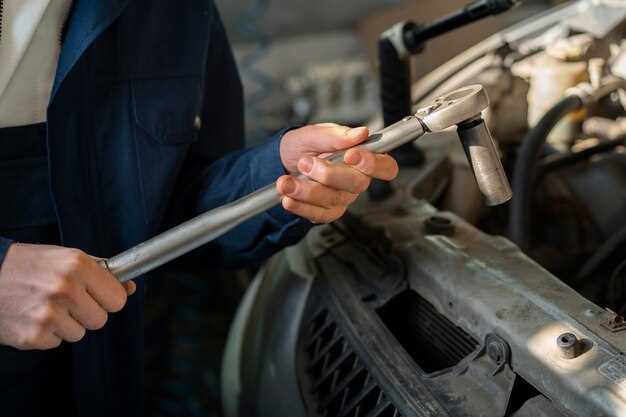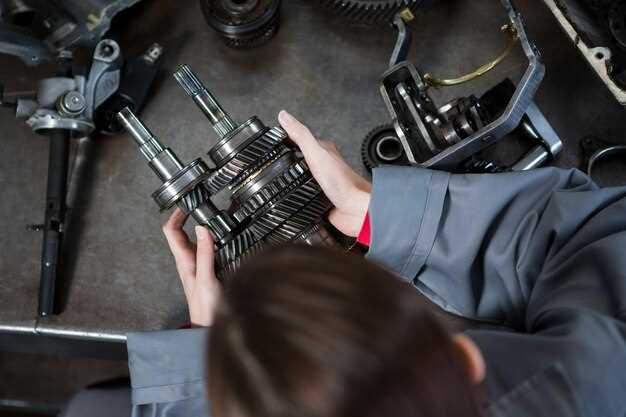The Benefits of Upgrading to Adjustable Sway Bars


As automotive enthusiasts seek to enhance the performance and handling of their vehicles, the importance of suspension components cannot be overstated. Among these, sway bars play a crucial role in reducing body roll during cornering, thereby improving stability and control. While traditional sway bars serve their purpose, adjustable sway bars offer a range of benefits that can significantly elevate your driving experience.
One of the primary advantages of switching to adjustable sway bars is the customizability they provide. Unlike fixed sway bars, which offer a one-size-fits-all solution, adjustable options allow drivers to fine-tune their vehicle’s handling characteristics based on driving style, road conditions, and personal preferences. This level of adjustability not only enhances performance but also allows for a more tailored driving experience.
Another critical benefit is the potential for improved handling. By adjusting the stiffness of the sway bars, drivers can achieve a balance between comfort and performance, resulting in better traction and responsiveness in various driving scenarios. Whether navigating tight corners on a track or cruising on winding roads, adjustable sway bars enable a more dynamic and controlled ride.
Furthermore, switching to adjustable sway bars can lead to enhanced safety on the road. With better handling and reduced body roll, vehicles equipped with adjustable sway bars are less likely to experience loss of control during sudden maneuvers. This added stability translates to increased confidence for drivers and passengers alike, contributing to a more enjoyable driving experience.
Improved Handling During Cornering
Switching to adjustable sway bars can significantly enhance a vehicle’s handling characteristics, particularly during cornering. The ability to fine-tune suspension settings allows drivers to customize vehicle dynamics to their preferences and driving conditions.
One of the primary benefits of adjustable sway bars is the reduction of body roll. This phenomenon occurs when a vehicle leans to one side during a turn, impacting stability and control. By adjusting the stiffness of the sway bars, drivers can minimize body roll, leading to a more planted feel in corners.
Additionally, adjustable sway bars can improve weight distribution across the vehicle’s axles. This results in better traction and grip, allowing for higher cornering speeds without compromising safety. Enhanced grip translates to improved acceleration out of corners, a crucial factor for both everyday driving and high-performance scenarios.
- Customizability: Different driving styles and conditions require varying levels of stiffness. Adjustable sway bars provide the flexibility to switch settings based on preference or specific driving conditions, such as track days or daily commutes.
- Improved Predictability: Enhanced handling performance aids drivers in anticipating vehicle behavior during cornering. This predictability boosts confidence, enabling quicker and more assertive driving maneuvers.
- Reduced Understeer/Oversteer: By adjusting the sway bar characteristics at the front and rear of the vehicle, drivers can tune the balance between understeer and oversteer, tailoring the response to meet personal driving preferences.
In conclusion, the switch to adjustable sway bars is a practical investment for enthusiasts seeking refined handling dynamics during cornering. The resulting improvements in body roll, weight distribution, and overall predictability make for a more engaging and confident driving experience.
Customization for Varying Driving Conditions

One of the primary advantages of adjustable sway bars is their ability to adapt to different driving environments. Drivers frequently encounter diverse conditions–whether navigating tight curves on a racetrack, facing rough terrain on a trail, or controlling a vehicle during adverse weather conditions. Adjustable sway bars offer the flexibility required to enhance vehicle performance in these varying scenarios.
For instance, in competitive driving or on winding roads, stiffer sway bars can minimize body roll, ensuring better handling and responsiveness. This configuration is crucial for maintaining traction and stability during high-speed cornering. Conversely, softer settings can provide increased body movement, allowing for improved grip on uneven surfaces or while maneuvering over obstacles.
In inclement weather, such as rain or snow, customized sway bar settings can enhance safety. A looser configuration may allow for more controlled lateral movement, which can be beneficial when navigating slippery roads. This adaptability not only promotes better traction but also enhances driver confidence and overall vehicle control.
The user-friendly adjustment mechanisms available in many modern sway bar designs enable drivers to make quick changes. This modularity encourages experimentation with different settings, allowing enthusiasts and casual drivers alike to fine-tune their vehicle’s handling characteristics based on personal preferences or specific driving conditions.
Furthermore, adjustable sway bars contribute to a tailored driving experience. Owners can prioritize comfort for daily driving or switch to a performance-oriented setup for track days or off-roading adventures. This level of customization not only enhances driving satisfaction but also allows for optimized performance, making adjustable sway bars an invaluable addition for any vehicle enthusiast.
Enhanced Stability on Uneven Surfaces
Adjustable sway bars significantly improve vehicle stability when navigating uneven surfaces, which is crucial for both off-road enthusiasts and everyday drivers. By being able to modify the sway bar stiffness, drivers can tailor their vehicles’ handling characteristics to suit specific conditions. This flexibility allows for better weight distribution during turns, minimizing body roll and enhancing grip, even on bumpy terrain.
When traversing irregular landscapes, such as gravel roads or dirt trails, a vehicle’s suspension system must adapt to sudden changes in elevation and surface texture. Adjustable sway bars help the vehicle maintain a more level stance, reducing the likelihood of losing traction. This is especially beneficial during cornering, where uneven surfaces can cause instability. A stiffer setting provides improved support and control, while a softer setting can absorb shocks better, making it ideal for harsh conditions.
Furthermore, the adjustable nature of these sway bars allows drivers to make on-the-fly adjustments based on changing driving conditions. For example, when encountering a rocky path, a driver can soften the sway bar to enhance comfort and grip. Conversely, on a smooth track, a firmer setting will provide enhanced responsiveness and cornering capabilities. This adaptability ensures that the vehicle performs optimally regardless of surface variations.
Overall, the ability to switch between settings not only increases driver confidence but also contributes to safer driving experiences. The enhanced stability provided by adjustable sway bars on uneven surfaces translates into better handling, reduced bounce, and an overall smoother ride.
Reduced Body Roll for Performance Vehicles
One of the primary advantages of switching to adjustable sway bars is the significant reduction in body roll, especially crucial for performance vehicles. Body roll occurs when a vehicle leans to one side during cornering, which can compromise handling and stability. By incorporating adjustable sway bars, drivers can fine-tune suspension stiffness to minimize this undesirable movement.
Adjustable sway bars provide the versatility necessary to adapt to different driving conditions, whether on the track or on the road. By stiffening the bars, drivers can enhance response and maintain a flatter cornering stance. This results in increased grip and confidence when taking turns at higher speeds, ultimately translating to improved lap times and overall performance.
In addition to enhanced cornering capabilities, reduced body roll contributes to a more engaging driving experience. It allows for better feedback through the steering wheel, so drivers can accurately gauge vehicle dynamics, making them feel more in control. This heightened responsiveness is especially beneficial in high-performance scenarios, where precision is paramount.
Furthermore, minimizing body roll enhances tire contact with the road surface, leading to better traction and braking performance. As a result, drivers can push their vehicles to the limits without the fear of losing control. Overall, the implementation of adjustable sway bars is a strategic upgrade that can transform the handling characteristics of performance vehicles, providing a competitive edge on both the track and open roads.
Easy Installation and Maintenance Guidelines
Switching to adjustable sway bars can significantly enhance your vehicle’s handling and stability, but the installation and maintenance process should also be simple and straightforward. Below are essential guidelines to ensure a smooth installation as well as proper maintenance of your adjustable sway bars.
Installation Process
When installing adjustable sway bars, follow these steps to ensure accuracy and safety:
| Step | Description |
|---|---|
| 1 | Gather all necessary tools including wrenches, ratchets, and a torque wrench to ensure proper tightening. |
| 2 | Lift the vehicle securely using jack stands or a hydraulic lift, ensuring it is stable and safe to work under. |
| 3 | Remove the existing sway bar by detaching the end links and mounting brackets, taking care to retain all hardware for potential reuse. |
| 4 | Install the adjustable sway bar by attaching it to the designated mounting points, ensuring it is aligned correctly with the vehicle’s suspension setup. |
| 5 | Secure the sway bar with the provided hardware, using the torque wrench to tighten to the manufacturer’s specifications. |
| 6 | Reconnect the end links, adjusting their length as needed to match the new sway bar configuration. |
| 7 | Lower the vehicle and test the sway bar by taking a short drive, listening for any unusual noises that could indicate improper installation. |
Maintenance Tips
Regular maintenance of adjustable sway bars helps prolong their lifespan and enhance performance. Consider the following tips:
| Maintenance Task | Frequency |
|---|---|
| Inspect sway bar links and bushings | Every 3,000 to 5,000 miles |
| Check for rust and corrosion | Monthly |
| Lubricate bushings as needed | Every 6 months |
| Test adjustable settings for optimal performance | Before any significant driving event or alteration in load |
| Replace worn parts immediately | As needed |
Adhering to these installation and maintenance guidelines will not only ensure the longevity of your adjustable sway bars but also contribute to an enhanced driving experience. Proper attention to these aspects can lead to better handling and stability on various road conditions.
Cost-Benefit Analysis of Upgrading Sway Bars
Upgrading to adjustable sway bars can significantly enhance vehicle performance, but it’s essential to evaluate the costs and benefits before making this investment. Below is a detailed analysis to help you make an informed decision.
Costs Associated with Upgrading
- Initial Purchase Price: Adjustable sway bars typically cost more than standard ones. Prices can range from $200 to $800, depending on the brand and vehicle compatibility.
- Installation Fees: Professional installation may be required, adding another $100 to $300 to the total cost if you prefer not to do it yourself.
- Maintenance and Adjustments: Regular adjustments may be necessary for optimal performance, which can incur additional labor costs over time.
Benefits of Upgrading
- Improved Handling: Adjustable sway bars can tighten or loosen, allowing for better control during aggressive driving or off-road conditions.
- Customization Options: Drivers can adjust the stiffness of the sway bars based on their preferences, whether for daily driving, track days, or towing.
- Increased Safety: Better handling leads to improved stability, reducing the risk of rollover in sharp turns.
- Enhanced Performance: Upgraded sway bars can reduce body roll, leading to a more dynamic driving experience, particularly in performance vehicles.
Long-term Value
While the initial costs may seem high, the long-term benefits can outweigh these expenses. Improved vehicle handling can result in less wear on tires and suspension components, leading to savings in maintenance and replacements.
Conclusion
Conducting a cost-benefit analysis reveals that upgrading to adjustable sway bars can be a worthwhile investment for those seeking enhanced vehicle performance and safety. By weighing both the initial costs against the long-term benefits, drivers can determine if this upgrade aligns with their driving needs and budget.
